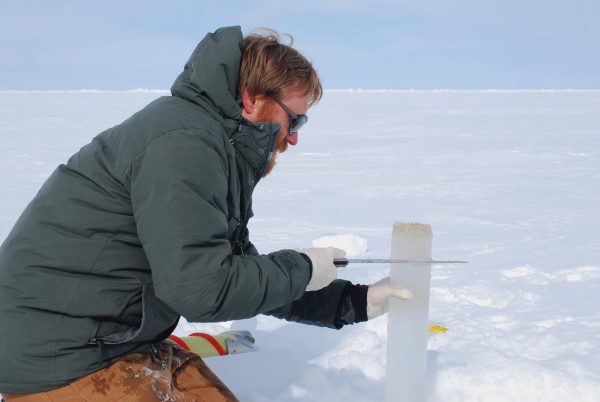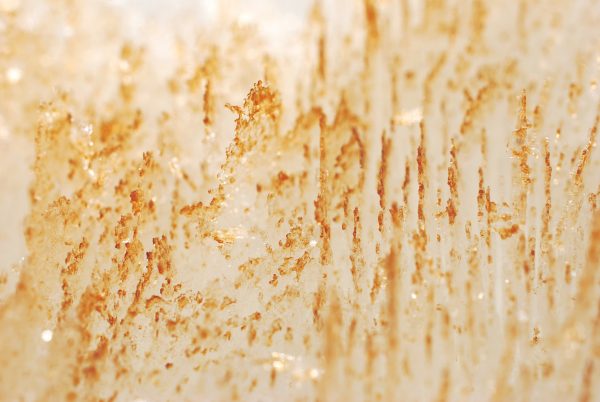Ice bacteria study will help investigate future changes in sea
October 26, 2016
Lauren Frisch
907-474-5350
By Lauren Frisch
About the series: This is the second part of a three-part series on a recent research
cruise to better understand species and processes in the Chukchi Borderlands, the
complex transition area from the shallow Chukchi Sea shelf to the deep Arctic Basin.
Currently, the region is not well understood. The cruise supported international researchers,
including a team of professors and graduate students from the University of Alaska
Fairbanks, on the U.S. Coast Guard Cutter Healy, an icebreaker capable of conducting extreme Arctic research. The research was funded
by a National Oceanic and Atmospheric Administration Ocean Exploration grant, which
sends researchers to explore the unknown and ask new questions.
UAF researchers collected information on important tiny sea ice animals during a summer
2016 cruise on the USCGC Healy icebreaker. This data will help researchers understand how sea ice influences the region’s
biology and what declining sea ice concentrations mean for these animals.

The cruise’s sea ice microbial team, led by UAF College of Fisheries and Ocean Sciences professor Eric Collins, wants to discover what critters are in the ice. This is important for two reasons, Collins explained. First, we don’t know what is in the ice now. And second, as sea ice concentrations continue to decrease due to increasing temperatures, we don’t know how this will affect the species composition above and below the ice.
“We need to gather a baseline understanding of what species are in the ice now so that we can better understand how species compositions will change as ice concentrations decrease, and monitor the kinds of species we may lose if multiyear sea ice disappears in the Arctic,” Collins said.
Algae, the tiny plants in the Arctic food web, tend to grow where conditions are just right — at the bottom of the sea ice where the ice meets the ocean. In this Goldilocks location, the algae receive sunlight from above and nutrients from the water below. Bacteria eat whatever the algae are producing, and they are more mobile, so they tend to be found throughout sea ice.
Collins explains that technological advancements have dramatically increased the ability to learn about organisms in the ice and begin to answer questions raised from past field excursions. “In 2002 it was normal to get about 100 DNA sequences per sample to describe the microbial community,” Collins said. "From the samples we collected this year we will get about 100,000 DNA sequences per sample.”
The team is working with ice cores, cylindrical samples that span a piece of ice from the top to the bottom. By cutting the core into sections, researchers can get a good vertical distribution of samples from the atmosphere right down to where the ice meets the water.
“After collecting a core, we cut it into sections and melt it down,” said CFOS master’s degree student Brian Ulaski. “Then all of the melted ice is sent through a 0.2-micron-sized filter to collect bacteria and other tiny animals in the sample.” (To put this in perspective, a human hair tends to be about 75 microns across.)
Back in the lab, the researchers plan to extract DNA from about 500 samples they collected on the Healy. DNA sequences from each sample can be compared to a database of DNA sequences to help identify which species are present in the samples.
The data collected on the 2016 cruise will provide important baseline information for many aspects of the biology and productivity of the Chukchi Borderlands. With the new insight from the cruise, the researchers look forward to further investigating the organisms and their habitat.
Read the first part of this series on the mysterious seafloor biology here. The third part of this series will be published Friday, Oct. 28.
More information from this research cruise, including photos and videos, can be found on the NOAA Ocean Explorer website.



